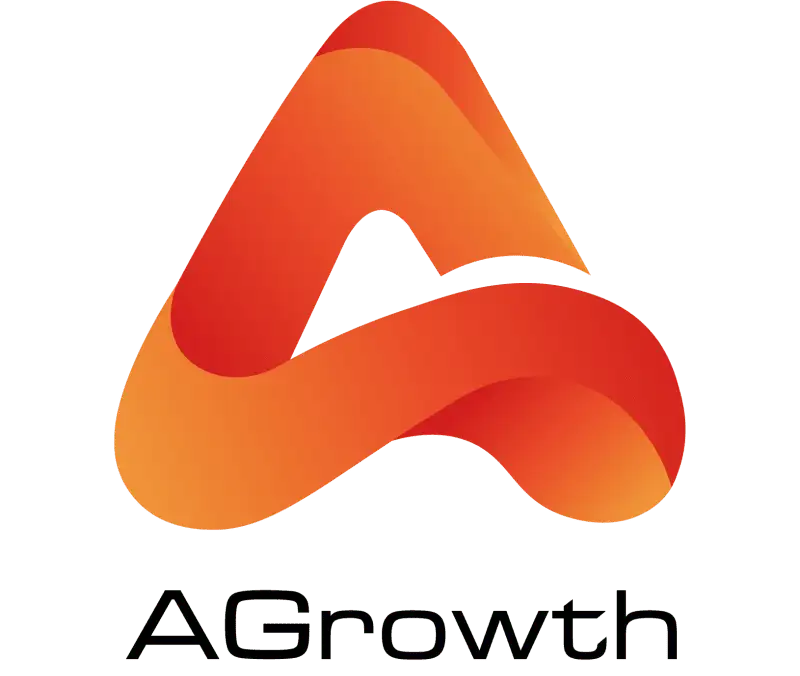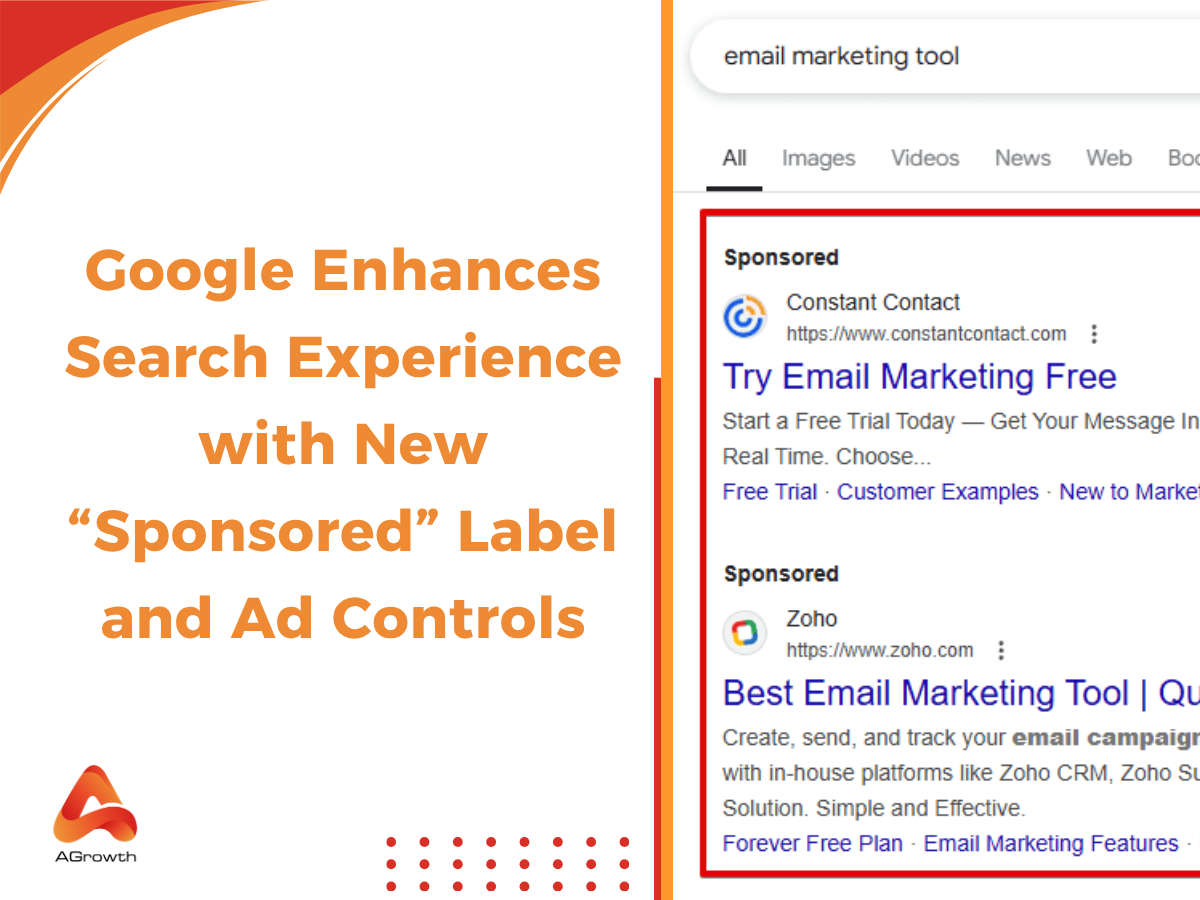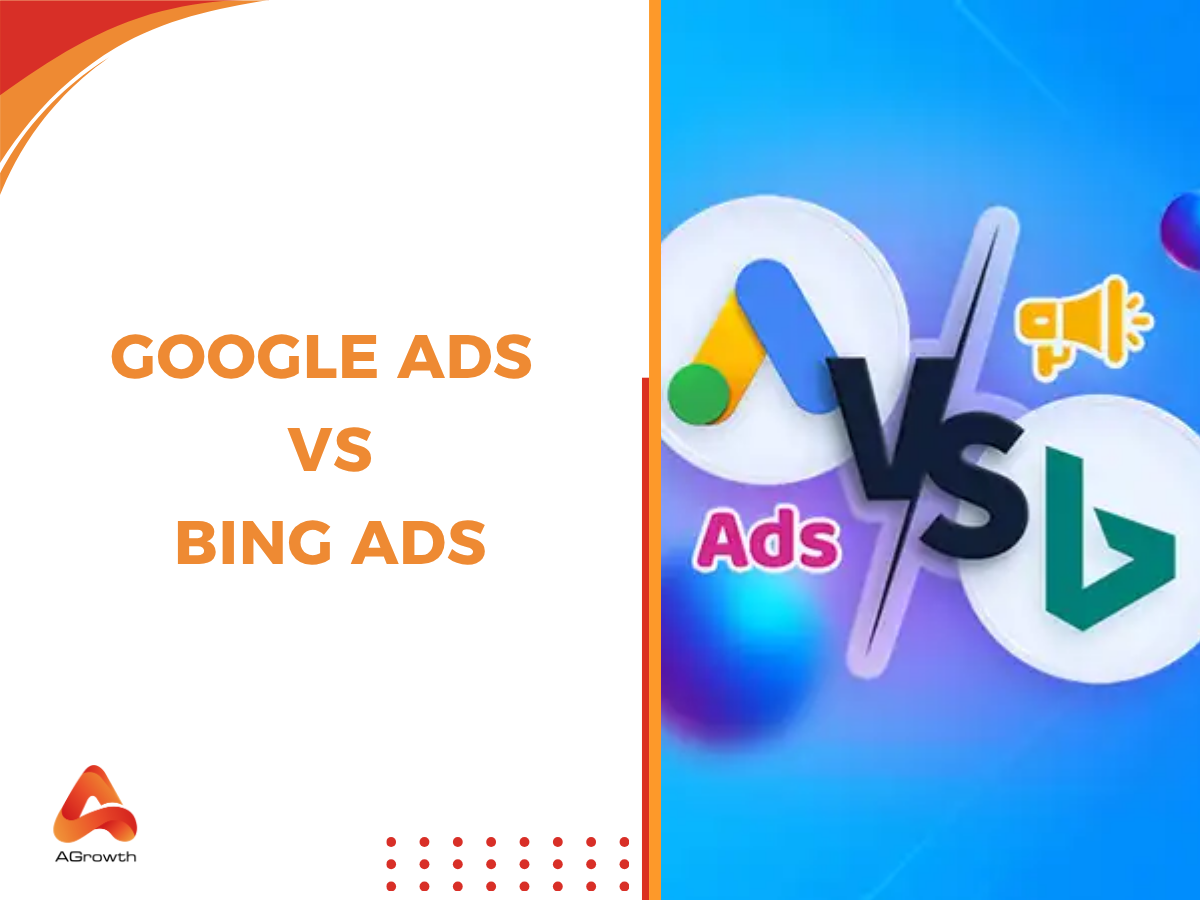
Table of Contents
Google Ads Headlines: Writing Secrets To Convert
Ever scrolled through Google and wondered why one ad grabs your attention while another barely gets noticed?
It’s not just about budgets or targeting tricks — more often, it comes down to the headline. In those few characters, you either spark curiosity or lose a potential customer.
In this article, we’ll break down the essentials of writing high-performing Google Ads headlines. You’ll discover what makes a headline click-worthy, the common mistakes to avoid, proven formulas top advertisers use, and real examples that inspire action. By the end, you’ll know exactly how to craft headlines that not only win attention but also convert clicks into customers.
What is a Google Ads Headline?
Google Ads headline is the clickable, blue-text portion of your ad that users see first in the search engine results pages (SERPs). It's your initial pitch, designed to capture attention, qualify the user, and compel a click. However, for the advanced marketer, the definition expands based on the ad format, as Google's machine learning plays an increasingly pivotal role in ad delivery.
Understanding the distinctions between headline types is crucial for leveraging each format's unique strengths and optimizing your campaigns for maximum impact.
Different formats of headlines
Google Ads uses headlines differently depending on the format:
-
Expanded Text Ads (ETAs)
Though largely phased out in favor of RSAs, understanding ETAs provides context. Here, you had direct control, with up to three headlines (30 characters each) that appeared in a set order. The advertiser had full authority over the final ad combination.
-
Responsive Search Ads (RSAs)
This is the current standard for search campaigns. Instead of static headlines, you provide Google with a pool of up to 15 unique headlines. Google's AI then dynamically tests different combinations and permutations of these headlines (along with your descriptions) to find the most effective ad for each specific search query and user. While headlines grab initial attention, writing a compelling Google Ads description is just as vital to support your message and persuade users to click.
The focus shifts from crafting one perfect ad to creating a robust set of interchangeable, high-quality components. Your job is to feed the machine the best possible ingredients.
-
Performance Max (PMax)
In PMax campaigns, headlines are one of many assets (including images, videos, and logos) that Google uses across its entire inventory (Search, Display, YouTube, Gmail, etc.). Google's AI has even greater autonomy here, mixing and matching these text assets with visual assets to create ads for a multitude of placements.
-
Responsive Display Ads (RDAs)
Similar to PMax, RDAs use a component-based approach for the Display Network. You'll provide up to five short headlines (30 characters) and one long headline (90 characters). These are then combined with your images and logos in various ways to create banner ads that fit different publisher placements. The long headline is particularly important, often being shown in larger ad units where more text is permissible.
Why Google Ads Headlines Matter?
Headlines are the most visible part of a Google ad and often the deciding factor in whether a user clicks or scrolls past. Since advertisers only have a few characters to make an impression, crafting strong headlines is critical to campaign success.
A well-optimized headline can:
-
Capture attention instantly – Users scan search results. A clear, benefit-driven headline makes your ad stand out.
-
Improve click-through rates (CTR) – Compelling headlines directly influence how many people engage with your ad. Higher CTRs usually translate to lower costs per click and better overall performance.
-
Match user intent – When your headline includes relevant keywords, it aligns with what searchers are actively looking for, boosting ad relevance and Quality Score.
-
Set clear expectations – Headlines prepare users for what they’ll find after clicking, ensuring a smoother and more trustworthy experience on your landing page.
Google Ads Headline Character Limit
Here are the detailed specifications directly from Google's guidelines, which are essential for planning your ad copy.
-
Text Ads & Responsive Search Ads (RSA):
You can provide up to 15 headlines for RSAs. Each headline has a maximum length of 30 characters.
-
Responsive Search Ad Descriptions:
You can provide up to 4 descriptions. Each description has a maximum length of 90 characters. And, you can add up to 15 headlines (30 characters each).
-
Performance Max (PMax) Campaigns:
-
Short Headlines: Up to 15 headlines with a maximum of 30 characters each.
-
Long Headline: At least one long headline with a maximum of 90 characters.
-
"Very Short" Headlines (for specific mobile placements): Up to 5 headlines with a maximum of 15 characters.
-
Responsive Display Ads (RDA):
-
Short Headlines: Up to 5 headlines with a maximum of 30 characters each.
-
Long Headline: One long headline with a maximum of 90 characters.
Beyond these character counts, your copy must also comply with Google's editorial guidelines to ensure quality, clarity, and professionalism. You can refer to our post for the detailed information on editorial guidlines.
10 Popular Types of Google Ads Headlines
Crafting the right headline can be the deciding factor between a user clicking your ad or scrolling past it. Below are some of the most popular and effective headline types that advertisers frequently use to boost engagement and conversions.
1. Direct Headlines
Go straight to the offer or product benefit without fluff. Works well for transactional searches.
Tip: Use primary keywords directly in the headline (e.g., “Buy Running Shoes Online”) to improve Quality Score.
2. How-To Headlines
Promise a clear solution or instruction. Great for problem-solving searches.
Tip:
-
Keep it concise, e.g., “How to Boost Your Website Traffic Fast”.
-
Avoid long sentences because of Google Ads’ character limits.
3. Question Headlines
Pose a question that matches the user’s search intent.
Tip: Mirror common queries, e.g., “Need Affordable Car Insurance?”. This boosts ad relevance and CTR.
4. Reasons Why / List Headlines
Numbers and lists create structure and clarity, building curiosity.
Example: “3 Reasons to Switch to Solar Energy”.
Tip: Works well for decision-stage searches.
5. Emotional Headlines
Characteristic: Tap into urgency, fear of missing out (FOMO), or excitement.
Tip: Pair emotion with benefit: “Don’t Miss Out on 50% Off Today”. Keep it natural, not clickbait.
6. Announcement Headlines
Share news, product launches, or updates.
Tip: Use words like “New”, “Now Available”, “Just Launched”. Example: “New Vegan Menu Now in London”.
7. Command Headlines
Direct the user with an action verb.
Tip: Keep it strong and clear: “Shop Now & Save 20%”, “Book Your Free Consultation”.
8. “Best” Headlines
People trust superlatives like best, top, leading.
Tip: Add a qualifier to keep it believable: “Best-Selling Laptops of 2025” instead of just “Best Laptops”.
9. Location-Specific Headlines
Add a city, region, or neighborhood to increase relevance.
Example: “Plumber Services in Manchester – Call Today”.
Tip: Especially effective for local businesses.
10. Numeric Headlines
Use figures, stats, or prices to make the offer tangible.
Tip: Highlight discounts or guarantees: “Save 30% on SEO Tools”, “24/7 Support in 10 Minutes”.
AGROWTH - GOOGLE AGENCY ACCOUNT
⭐ Managed campaigns with expert guidance
⭐ Flexible invoice-based billings, custom top-ups
⭐ High resistance to suspension via agency tier
⭐ Quick fund transfer to new account if needed
⭐ Priority support via Google Partner channel
⭐ Lower fees from 3-5%
⭐ Eligible for bonus credit up to $384
Tips to Optimize Google Ads Headlines
Crafting compelling headlines is only the beginning. To truly maximize your Google Ads impact, you need a strategic approach that blends relevance, testing, and alignment across your campaign. Here are expert-backed tactics to elevate your headline performance:
1. Align Headline with Landing Page
Ensure your headline and landing page are offering the same promise. This consistency is a critical part of Google's destination requirements, which assess the quality and relevance of your post-click experience.
Discrepancies—like promoting a discount in your headline but not showing the same offer on your page—can erode trust, increase bounce rate, and lower your ad rank. Consistency is key.
2. Mirror Ad Group Keywords
Embedding relevant keywords from your ad group into your headline boosts ad relevance and quality score, often reducing CPC in the process. Avoid generic language—set up tightly themed ad groups to write more specific, powerful headlines.
3. Leverage Dynamic Keyword Insertion (DKI)
With DKI, your ad automatically replaces a placeholder with the actual search query that triggered it—making your headline feel tailored to each searcher. Just be cautious; phrasing must still make sense contextually.
4. Incorporate a Strong Call to Action (CTA)
Your headline serves as both the hook and the CTA in search ads. Phrases like “Shop Now”, “Get a Quote”, or “Book Your Free Trial” can drive action directly from the headline when they feel purposeful and compelling.
5. Infuse Your Unique Selling Proposition (USP)
Differentiate yourself by highlighting what sets you apart—whether it’s “Same-Day Free Shipping”, “24/7 Customer Support”, or “Money-Back Guarantee”. Speaking confidently about what only you offer boosts both credibility and clicks.

6. Address Pain Points
Headlines that empathize with your audience’s challenges—such as “Tired of Overspending on Ads?”—are powerful. They signal understanding and position your solution as the answer.

7. Use Action-Oriented Verbs
Lead with strong verbs like “Get”, “Save”, “Start”, or “Discover” to inspire immediate action. These verbs are concise and pack an emotional punch—especially important within character limits.
8. Create a Sense of Urgency
Phrases such as “Limited Time Offer” or “Sale Ends Tonight” tap into FOMO (fear of missing out), prompting quicker decisions. When used authentically, urgency can significantly increase CTR.

9. Perform Regular A/B Testing
Never settle on a single headline. Test different themes—keywords vs. benefits, emotional vs. direct commands—and analyze which variants drive higher CTRs and conversions. Data-driven refinement is the secret to long-term improvement.
10. Maintain Copy Freshness
Rotate your headlines periodically to beat ad fatigue. Refreshing ad copy not only keeps messaging current but can also re-engage users who became blind to stale ads.
Common Mistakes About Google Ads Headlines
Even seasoned advertisers fall into traps when crafting Google Ads headlines. A headline may look fine on the surface, but small missteps can drastically reduce ad performance. Here are the most common mistakes to watch out for:
Being Too Generic
Headlines like “Best Products Here” or “Great Services Available” sound flat and unmemorable. They don’t differentiate you from competitors and often get ignored.
Instead, highlight what sets you apart — whether it’s free shipping, same-day delivery, or a unique benefit.
Ignoring User Intent
Not aligning the headline with the searcher’s intent is a huge pitfall. For example, if someone searches for “affordable running shoes” but your headline only says “Stylish Shoes for Everyone,” you miss the chance to directly connect with their need.
Always mirror the keywords and intent in your headline.
Keyword Stuffing
Some advertisers cram in as many keywords as possible, thinking it boosts relevance. In reality, it creates robotic, unnatural headlines like “Cheap Shoes | Buy Cheap Shoes | Affordable Cheap Shoes.” This hurts both click-through rate and brand credibility.
Use keywords smartly, not excessively.
Overpromising or Clickbait
A headline that promises more than the landing page delivers can get clicks but damages trust. For instance, advertising “50% Off Today Only” when the offer doesn’t exist can frustrate users and even risk account suspension.
Before reaching suspension, such inconsistencies are a primary reason for having Google Ads disapproved, halting your campaigns entirely. Be bold, but stay honest.
Forgetting Emotional Triggers
Facts alone don’t always convert. Headlines that only state features (“Running Shoes in Multiple Colors”) miss the emotional pull of benefits (“Run Farther, Feel Lighter”).
People click on headlines that resonate with their goals, fears, or desires.
Not Using Available Space
Google gives you up to 30 characters per headline slot, with three slots visible. Many advertisers underuse this real estate by writing short, vague lines.
Maximize space strategically with value-driven, keyword-relevant copy.
Neglecting to Test Variations
Sticking to one or two headline variations can stall performance. Without A/B testing, you’ll never know which angle — urgency, pricing, or emotional appeal — resonates best.
Testing multiple headlines is one of the simplest ways to boost CTR.
Forgetting Mobile Experience
What looks good on a desktop might cut off awkwardly on mobile. Long or cluttered headlines risk being truncated, which reduces clarity.
Always preview ads across devices to ensure your message stays sharp.
Conclusion
Crafting strong Google Ads headlines is an art of precision. It requires balancing clarity, relevance, and user intent while avoiding common pitfalls that can drain your ad spend. With the right approach, your headlines become more than text — they turn into a direct path for clicks, engagement, and conversions.
But even the best headlines won’t deliver results if your ad account is blocked by restrictions, slowed down by verification issues, or limited by spending caps. That’s where AGrowth steps in. We don’t manage campaigns — instead, we give advertisers direct access to ready-to-use Google Ads accounts so you can launch and scale your campaigns without delays or interruptions.
Related posts:









Your comment